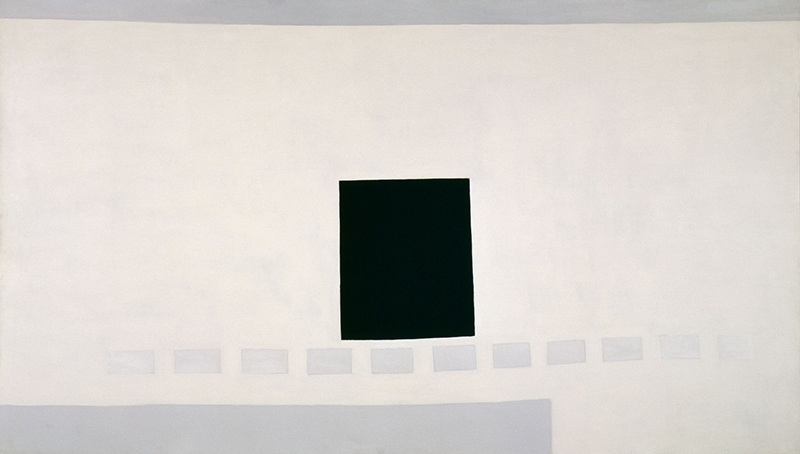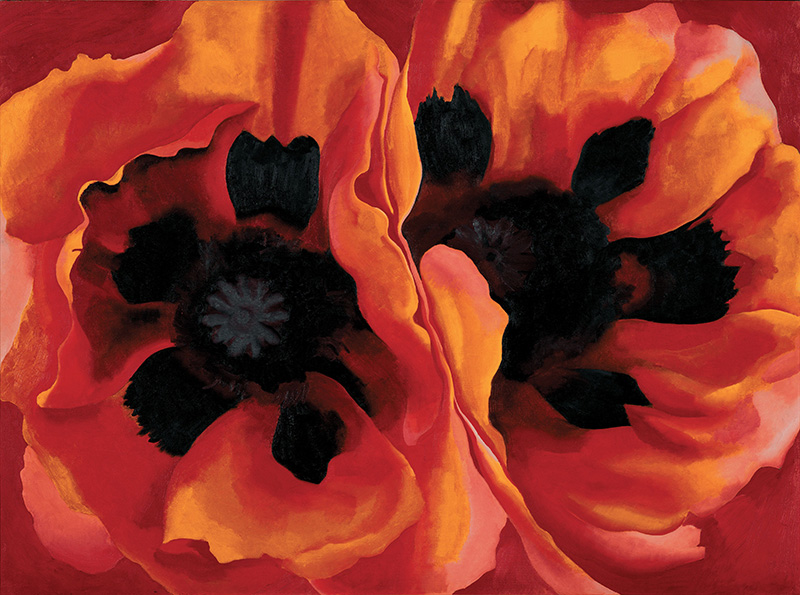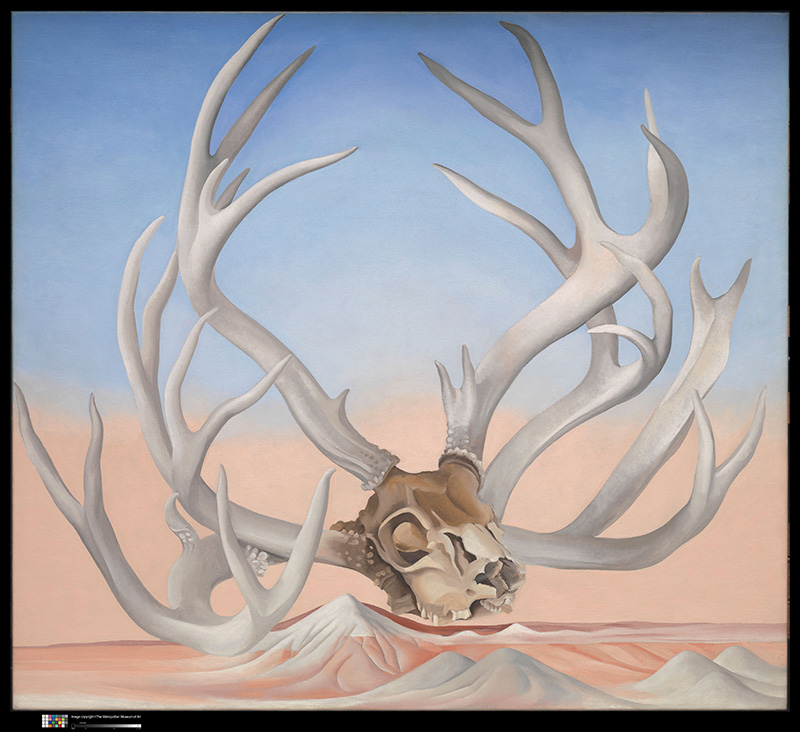ART CITIES:Vienna-Georgia O’Keeffe
 Georgia O’Keeffe is one of the most significant and intriguing artists. She played a pivotal role in the development of American Modernism and its relationship to European Avant-Garde Movements of the early 20th Century. Producing a substantial body of work over 70 year, she sought to capture the emotion and power of objects through abstracting the natural world.
Georgia O’Keeffe is one of the most significant and intriguing artists. She played a pivotal role in the development of American Modernism and its relationship to European Avant-Garde Movements of the early 20th Century. Producing a substantial body of work over 70 year, she sought to capture the emotion and power of objects through abstracting the natural world.
By Efi Michalarou
Photo: Bank Austria Kunstforum Archive
Georgia O’Keefe’s retrospective at Bank Austria Kunstforum in Vienna is the biggest European exhibition so far that focuses on the painter‘s oeuvre from her beginnings as an artist in 1915 to her late period in the ‘70s. Georgia O’Keeffe attended the Art Institute of Chicago for one year and studied at the Art Students League in New York City, where the dominant emphasis was on realism. In 1908, her last year with the League, she won the William Merritt Chase still life prize for her painting “Untitled (Dead Rabbit with Copper Pot)”. She then quit painting for four years, claiming later that it was due to her frustration with the tradition she was working in. In 1912, at a summer course for art teachers she discovered the theories of artist Arthur Wesley Dow, as taught by his colleague Alon Bement. Dow’s belief, that the artist’s goal was to express his/her own thoughts and feelings, provided O’Keeffe with an alternative to the type of realism she had been trained in. Through her consistently provocative and distinctively personal approach to image making, Georgia O’Keeffe created a body of work that conveys the integrity of her Modernist vision, her independent spirit, and, above all, her profound sensitivity to the vitality of natural forces. Although her career was launched by Alfred Stieglitz, one of the most progressive and influential figures in the then male-dominated art community, his unconsciously sexist ideas about her work precipitated essentialist responses to it. Such readings, to which O’Keeffe objected, dominated the critical reception of her work in the ‘20s, and they have continued to appear in various guises in contemporary art literature; all of these interpretations downplay the broader significance of her achievement. Indeed, more than any other artist of the Stieglitz circle, O’Keeffe created a body of work that fulfilled Stieglitz’s visionary ideas that an art indigenous to America could be equal in importance to that produced in Europe, and that women could produce art as significant as that produced by men. In largely overcoming many critics’ gendered interpretations of her work, O’Keeffe also played a key role in disabusing the art community and the general public of the notion that gender was in any way a determinant of artistic competence or creativity. Thus, she helped to establish a new and significant space for female artists in a realm that has continued to be dominated by men. Featuring 100 works, which have rarely left America since her death in 1986, among them is “Jimson Weed/White Flower No. 1” (1932), which in 2014 became the most expensive painting sold at a Sotheby’s auction by a female artist when it was bought for $44.4m., In addition, a selection of photographs is on show, taken of her by her husband Alfred Stieglitz and other photographers, among them Ansel Adams and Paul Strand, which underscore the not always problem-free, virtually mythical fusion of work and person.
Info: Curators: Heike Eipeldauer and Florian Steininger with Tanya Barson, Bank Austria Kunstforum Wien, Freyung 8, Vienna, Duration: 7/12/16-2/3/17, Days & Hours: Mon-Thu & Sat-Sun 10:00-19:00, Fri 10:00-21:00, www.kunstforumwien.at




